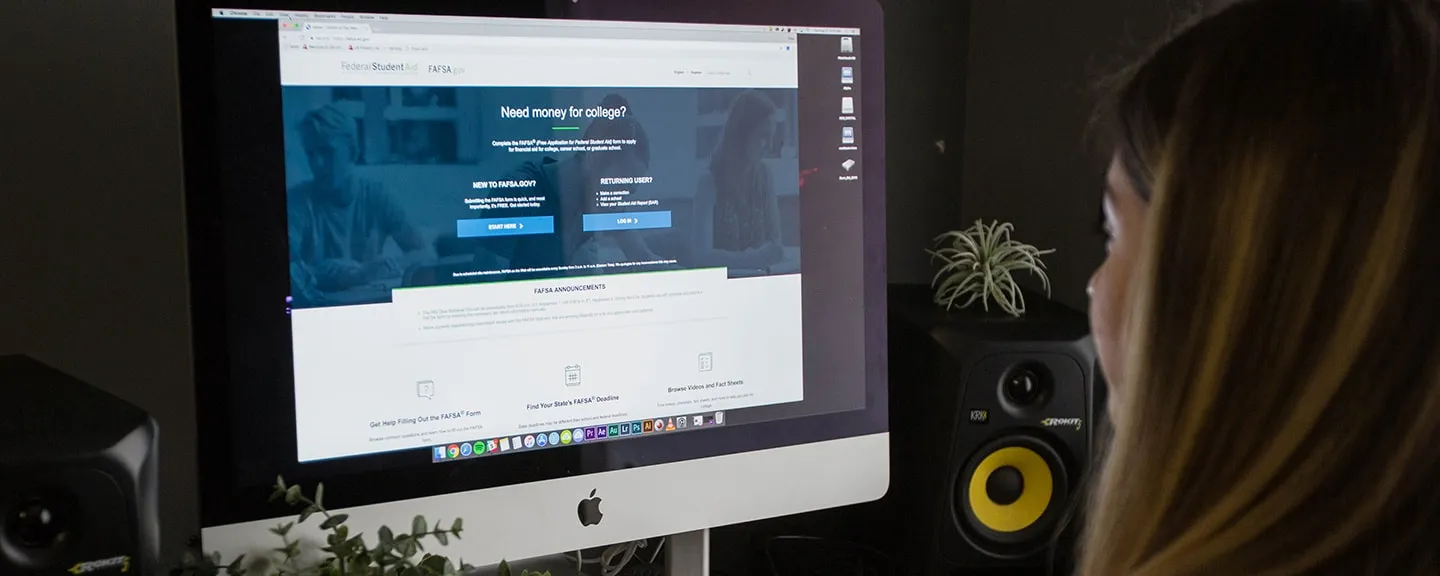- Home
- >
- APU Articles
- >
- News Article
Wondering When to Submit FAFSA? Here’s Why Earlier Is Better
September 01, 2018 | Written By Ashley Eneriz

In 2016, the Department of Education moved up the Free Application for Federal Student Aid (FAFSA) process start date to October 1. So, even though your high school senior might still be trying to memorize their locker combination, this is the perfect time to complete and submit your FAFSA.
When to Submit FAFSA
Many parents and guardians wonder when to submit FAFSA since the enrollment window is so broad. Although you technically have several months to send in your FAFSA, it is better to complete the application within the first month or two after it opens. The FAFSA typically opens on October 1 the year prior to the academic year. However, the 2024-25 application won't be available until December 2023.
Feeling a little nervous to get started? Fear not. The application is done entirely online and should take an hour—or less—for most families. Even better, FAFSA now uses tax reports from two years prior, and you can leverage the IRS Data Retrieval Tool (DTR) to quickly and accurately input your tax details.
Benefits of Submitting the FAFSA Early
Even if you don’t think your family will qualify for aid—or if your student hasn’t started the college application process, but plans to attend next fall—it’s wise to get your FAFSA in well ahead of the deadline. Here are four reasons why earlier is better.
1. Better Access to Aid
Many states and schools have a first-come, first-served policy in regard to financial aid. The Department of Education gives out millions of dollars each year, but it is not an unlimited resource. The sooner the application is submitted, the better your chances are to qualify for free grant money and federal loan eligibility. File too late, and your student’s freshman year could be a bit costlier than you planned for.
2. It’s Easier to Compare School Choices
When you submit your FAFSA early, you increase your chances of being able to see your student’s estimated financial aid before the college decision deadline. If they are having trouble deciding between two schools, the amount of aid offered can make the choice easier.
Don’t have all of your college applications in? You can still complete the FAFSA and add every school your student is considering, even if he or she hasn’t applied or been accepted yet. This will hold your family’s place in line for financial aid if they do get accepted. You can easily add or remove schools from your FAFSA as well.
3. Less Stress to Deal With
Senior year is typically a busy one for both students and their families. Submitting your FAFSA early can make life less stressful. This also gives you enough time to gather needed information (or ask for help if you get stuck). It’s a good idea to take advantage of this time now—before life gets bombarded with college application deadlines, special senior activities, and finals.
4. Finish Your Financial Picture
Once you know how much financial aid your family will receive, you can create a plan for the rest of your college student’s needs. Seeing the determined amount of aid might encourage you and your student to apply for more scholarships or set money aside for the next eight months. You can also use this time to discover the amount of student loans your child will have to take out and search for the best loan options.
Don’t let the FAFSA process intimidate or delay you. While the application can seem overwhelming, it shouldn’t take you too long to complete. Even if you don’t think you qualify for financial aid, still submit the FAFSA for federal loan eligibility.
Is your student interested in applying to Azusa Pacific University? Remember to use APU’s school code when completing the application: 001117. You can also learn more about financial aid opportunities at APU.